This post may contain affiliate links, meaning I can earn a small commission from items you purchase (at no cost to you).
I’m here to share a love for eating plants with as many people across the globe as I can. In a world that is increasingly turning to food forms that lack nutrients, I want to instill the healthy habit of 1 green smoothie a day into as many people as I possibly can. Yet, there is more than 1 way to drink your greens, right? That’s why I did a juicer vs blender test; to find out which is better.
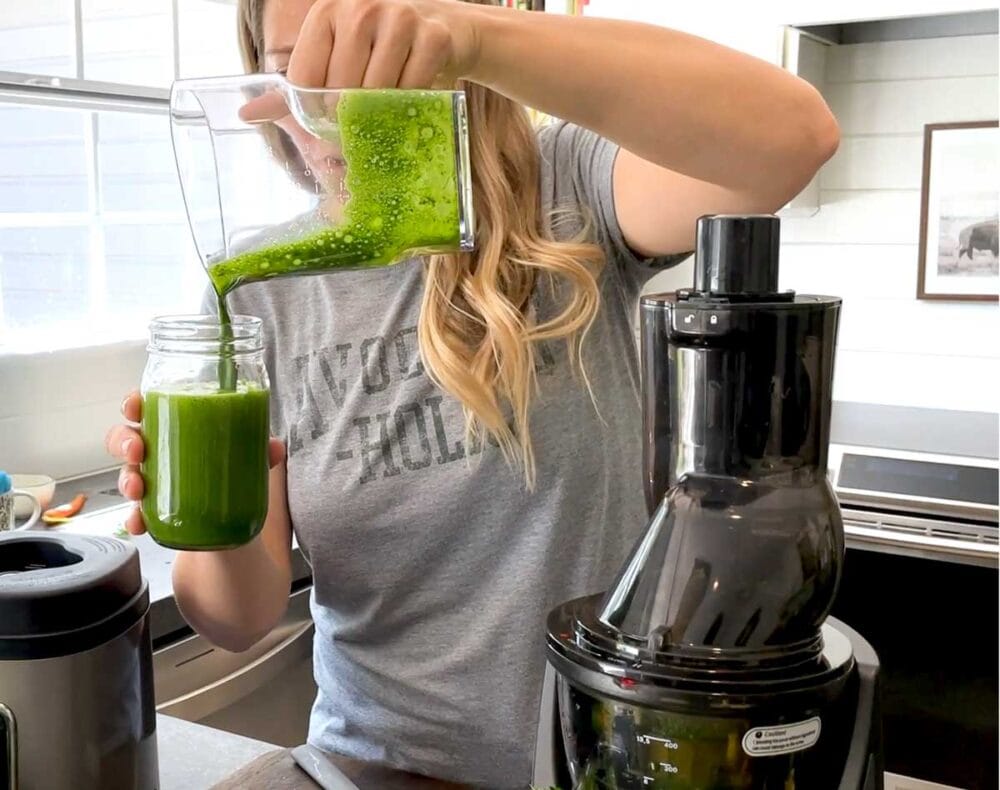
Both options give you the freshest produce in an easy-to-drink form, so is one actually better than the other? Well, let’s find out!
Table of Contents
Why Use a Juicer or Blender?
Whether you choose to blend or juice, you are gifting your body improved health by using these nutrient packed drinks. Regularly drinking smoothies or fresh, veggie-based juice will:
- Increase your veggie intake dramatically
- Make it easier as well as quicker for your body to absorb nutrients. Blending and juicing allows the food to become somewhat “pre-digested”
- Curb appetite + reduce cravings for sugar and processed foods because you’re nourishing your cells with micronutrients. Your body no longer craves the “carbs” or macronutrients
Now, let’s put the juicer vs blender debate to the test!
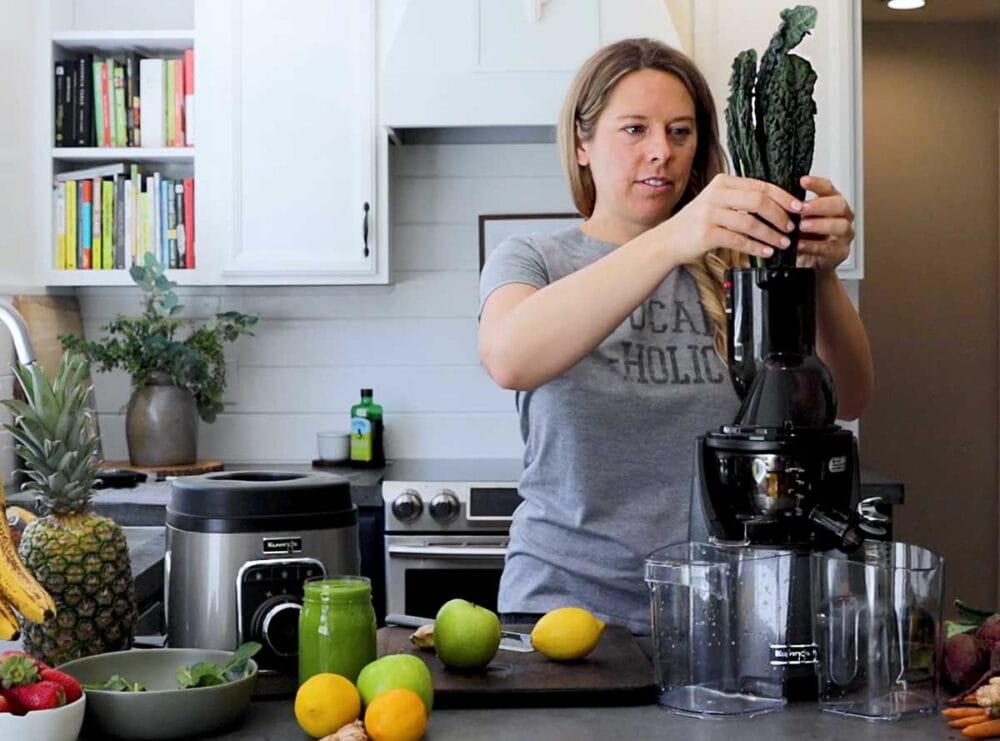
Blending Smoothies
Spoiler Alert! Blending is obviously my preferred method of drinking plants, yet have you ever asked, why? In the juicer vs blender debate, here’s the blending side:
Pros for blending smoothies
- Blend more than just veggies – add fruits, diff types of milk, ice, nuts, seeds, nut butters, oils, protein powders, supplements – you name it
- Fiber helps fill you up – When blending the whole veggie and fruit, the fiber from peels and flesh help fill up space
- Cost of the blender is minimal – most people already have a blender in their kitchen
- Smoothies are much more kid-friendly – In my experience, kids love smoothies more than veggie-based juice because you can thicken them up to look and taste like a frozen dessert.
Cons of blending
- Less quantity of nutrients per serving than juicing – Because the fiber remains, you need to drink more smoothies than juice to get the same amount of vitamins, minerals and phytotnutrients per glass
- Some produce is not good for blending – Root veggies like carrots, sweet potatoes, parsnips and beets are packed full of nutrition, but don’t taste so good in smoothies. They often come off chalky as well as bitter. They are more suitable for juicing.
But that’s not all… juicers have a lot of great features too. So let’s talk about the flip side of the juicer vs blender debate.
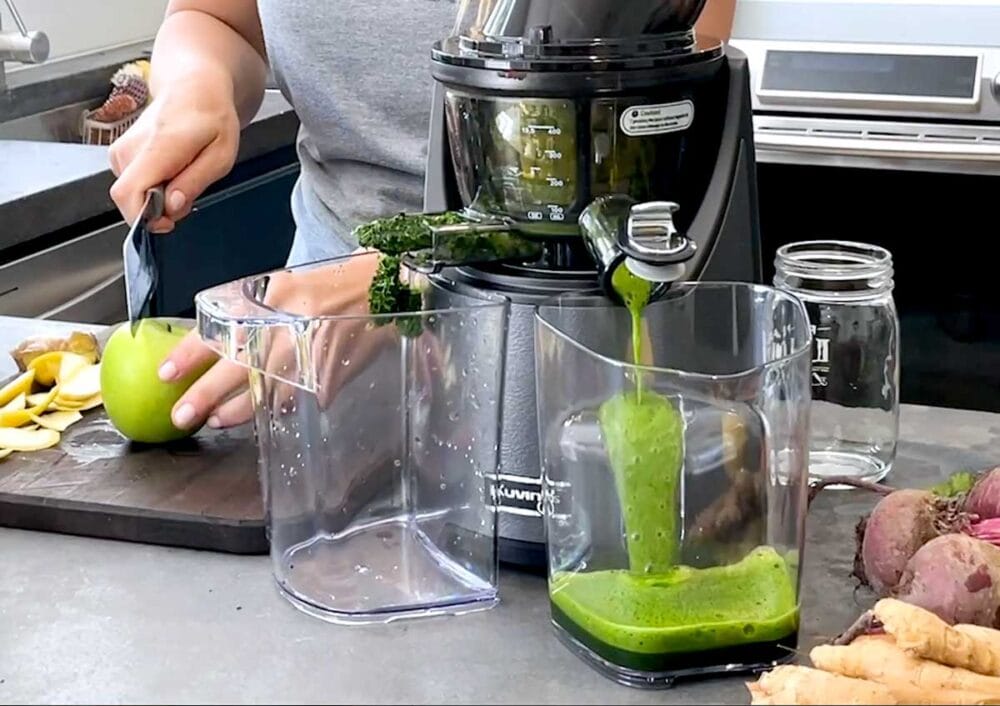
Juicing fruits and vegetables
While the blender is my go-to kitchen appliance, a fresh-squeezed juice from a juicer is fun. It feels like a luxurious drink that can be equally delicious. So what are the benefits and drawbacks of juicing?
Pros of juicing
- More veggies per serving – Since the fiber is removed, more veggie juice fits in the glass versus a smoothie
- Easier to digest nutrients – Unlike blending, juicing extracts nutrients + water from veggies and fruits leaving behind plant fibers. This allows the body to absorb the nutrients quicker without having to expend energy to digest the fiber too.
- Quicker energy boost – Juice has a higher concentration of veggies (and therefore nutrients) per glass versus a smoothie, and is in an even more pre-digested format than smoothies for quicker nutrient absorption.
- Less heat damage – Blades run at high speed on blenders that can slightly heat the smoothie which could kill off some of the beneficial enzymes.
Cons of using a juicer vs blender
- Juicing machines are sometimes more difficult to clean – Juicers usually have more parts to clean and take a little longer to clean than blenders
- More refrigerator space required – Juicing requires more veggies and fruits per serving than blending, so you need to have more refrigerator space to store them
- Veggie costs are more than blending – because you are using more veggies per serving, you need to buy more
- Whole leafy greens are more beneficial to health—juicing removes the skin + insoluble fiber of fruits and veggies, making them less nutritious.
As you can see, both juicers and blenders have some great positives. No matter which appliance you’re in the market for, I’ve got my personal recommendations to share.
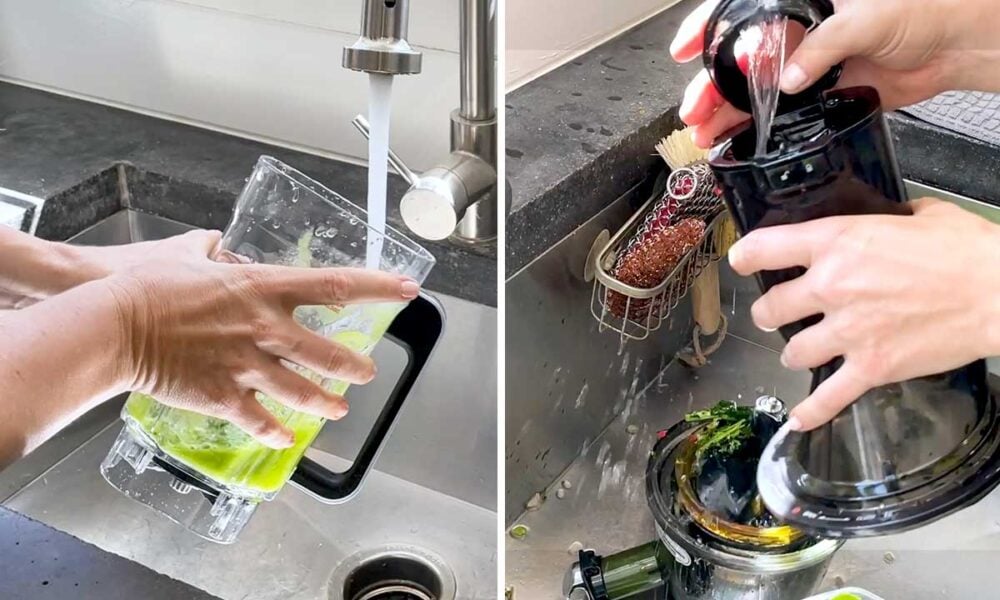
Best Juicers
Lots of people shy away from juicers because of the price. They can def be expensive, yet the one I recommend the most to people is actually a lower price point! The Breville JE98XL Juice Fountain Plus Centrifugal Juicer is one of the top rated juicers on the market, and recommended for juicing leafy greens.
My second juicer recommendation is the Omega Vertical Slow Speed Juicer, 150-Watt. The Omega brand is known for its long-lasting machines, plus this juicer has fewer parts to clean #bonus.
Best Blenders
One of the top questions I get is what kind of blender is the best blender for smoothies? If you’ve decided smoothies win in the juicer vs blender debate, then check out my handy Blender Guide.
While I’m constantly on the lookout for new, great blenders to try, Vitamix is my go-to for the best blender out there. Whether its the trusty Vitamix 7500 that I started out on, or my current A3500, you can’t go wrong with this brand.
Guess what, though?! You don’t need a high-end blender to get started with green smoothies. Our community uses blenders of every shape and size to make their daily creations. If you’re looking for a blender on a budget, then definitely check out Nutribullet. They have a great range of blenders at a variety of price points. Lots of smoothie lovers swear by Nutribullet, and I love them too!
Share in the comments below which team you’re on in the juicer vs blender debate. Also, let me know which machine you use!


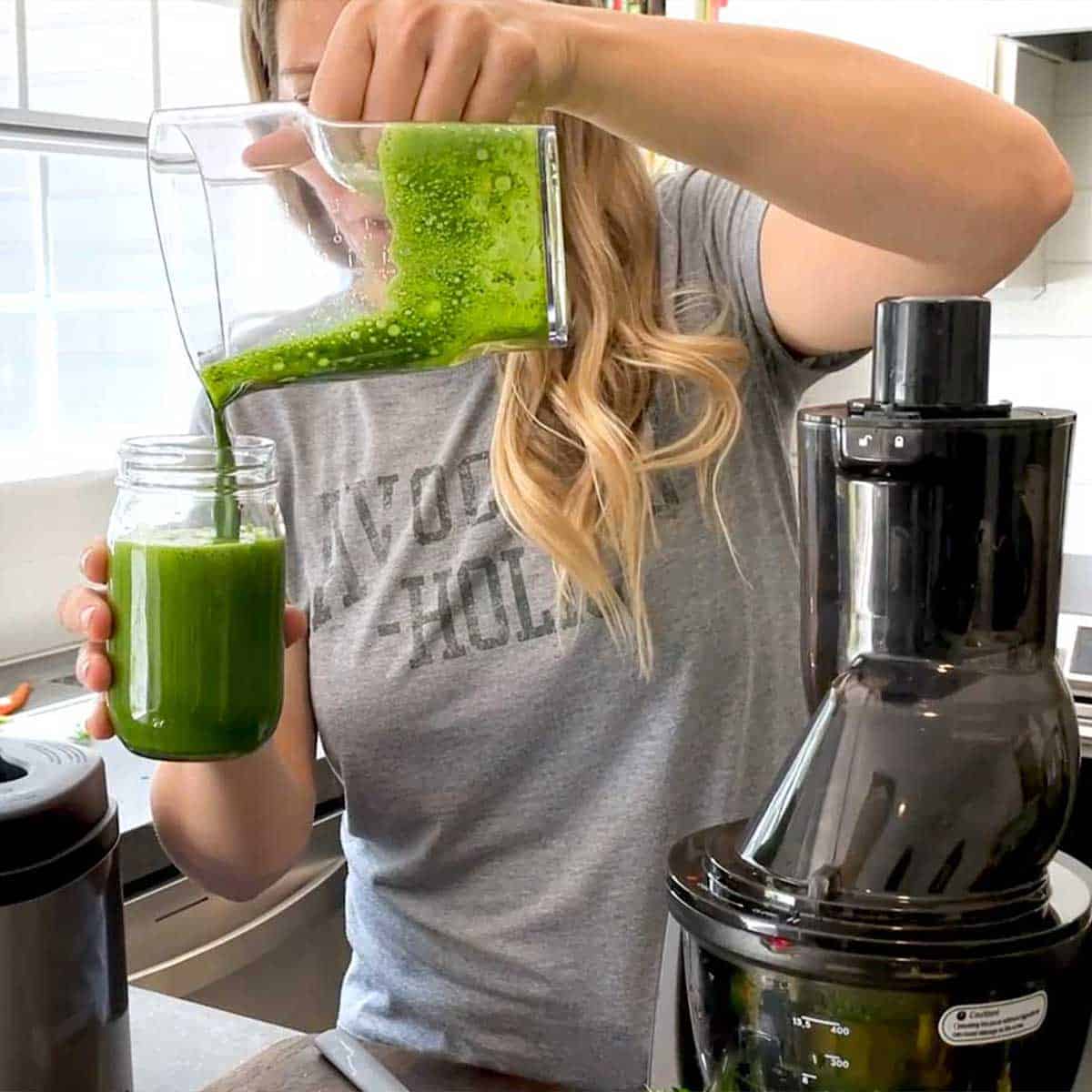
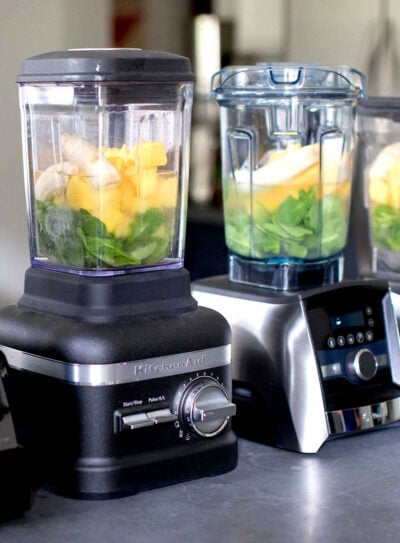
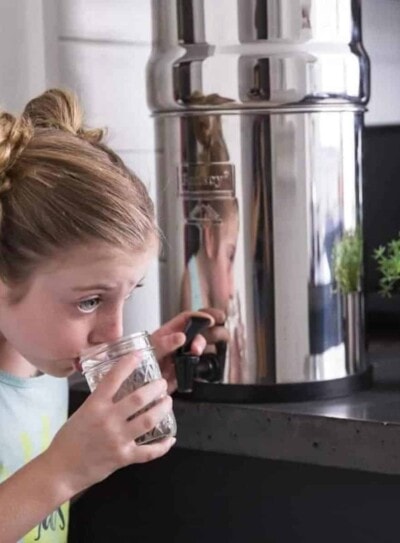
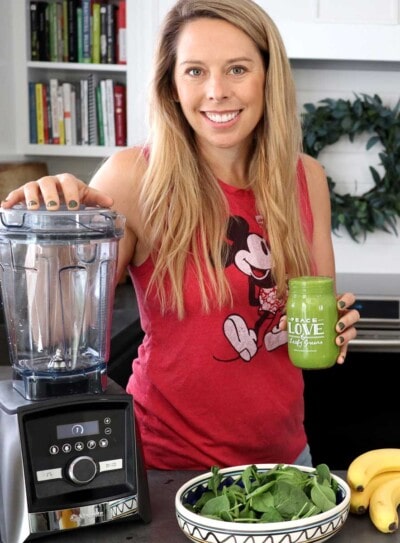
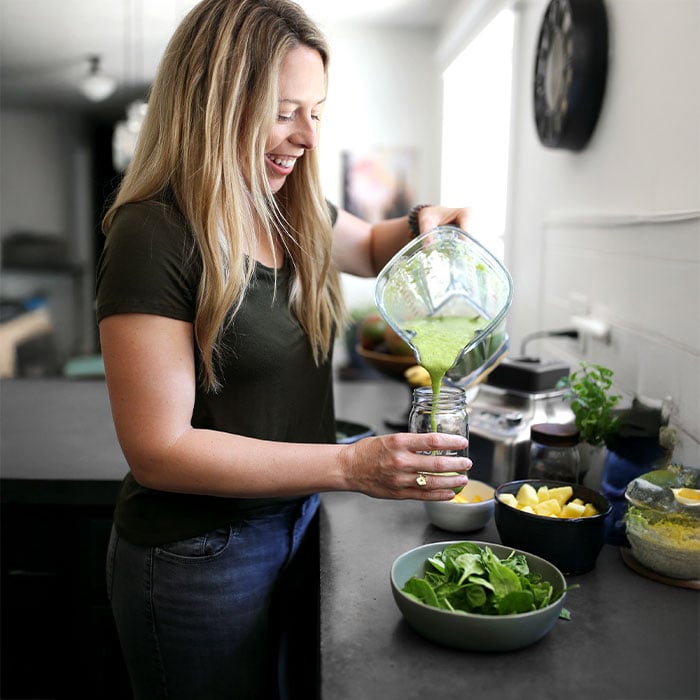









Currently, I’m using my Vitamix Creations II and I’m loving the green smoothies. However, at times, I would like for my smoothies to be less smooth. Do you know what I mean? Sometimes I don’t want the smoothies to be so thick, so what can I do about the consistency? Or is this telling me I need to purchase a juicer?
Thanks and keep up the good work!
Sheila C
Hi Shelia.
It is the pulp that is making the smoothies so thick, and that fiberful pulp is missing in juice. You could try thinking out your smoothie with water, or blending it a little longer, or both. The other option, like you mentioned is to juice when you are looking for a thinner beverage. Be wary however to juice mostly veggies and eat something filled with protein alongside the juice, so you blood sugars don’t spike and then crash later leaving your tired.
You can add more liquid to make it not so thick. Water helps a lot.
I Love the Idea of the soup! My husband makes fresh chicken soup almost every thursday. This is perfect for both of us. I’ll drink the juice & he’ll use the pulp!
Thanks you! Linda
Pleasure! Juice pulp also works great added to pancake batter along with dried herbs. You can make then and eat them with your soup!
I love to both juice and blend. I think I juice more but only because I enjoy the tastes when I mix the flavors right there, with no milk or any extra calories added. The thing is, you can’t go wrong either way!
Beginners Luck Smoothie is delicious… I might be having Beginner’s Luck all week (smile)
I blend, by the way.
Veggies are not my first food of choice so smoothies work great for me. I’ve signed up for the April 1st challenge and will be using my handy dandy Black and Decker blender. I did, however, run my carrots thru the food processor last night to be ready for today. I’m not sure how carrots would do in my blender. 🙂
I actually juice and blend. I juice the veggies I want for that day and use the juice as the base for my smoothie. Add ice and all the fruit I want and use the juiced veggies. Can’t taste the difference at all.
I’m on beta blockers and ace inhibtors and duretics for cardiomyopathy and when I juice all day I get painful muscle spasms..what do I do to modify to be able to keep juicing?
When you blend oranges you don’t leave he peel on do you?!
Nancy
Hi Nancy.
Angela here…the nutritionist who wrote this article.
Normally when you blend oranges or other citrus fruits like grapefruit, limes or lemons, you remove the peel first, because they leave a bitter aftertaste and can interfere with some of the nutrient absorption from the juice. That said, go ahead and leave on thinner peels on apples, pears, grapes, carrots, etc. They don’t interfere with taste, and provide extra fiber and other healthy micronutrients in your smoothie.
Leave a reply and let us know how it goes with the oranges in your smoothie.
Hi I Everyone, I just started making green smoothies with my vitamix. btw-best investment for better health.. I would like to know has anyone achieved making juice with the blendtec or vitamix?
Thank you for this. I’ve always used a juicer, but my mom has a Ninja, and what I’ve found is that I have to add some sort of ‘base’ like water or coconut water to get the blender going. While she enjoys ‘getting everything’ from the blender, I prefer to have the pulp separate from my juice, so I use the juicer for me, and the blender for her. My question is: which is better? she’s diabetic, so I want to avoid so many fruits in her juices. Thanks.
Hi Sherly.
Angela here….the nutritionist who wrote the article.
All of us should try to balance out the sugar we ingest with fiber, protein and healthy fats to keep from spiking our blood sugars and induce a sharp insulin response. This of course is especially important for diabetics.
When blending, you can add nuts, flax seeds, protein powders, avocados to help even out the body’s insulin response to the natural sugars from the fruit. When juicing, I advise my clients to make sure the majority of your juice is veggie based, and also eat a hand full of nuts or eat some avocado, almond butter or hummus with whatever else you are eating with the juice.
I Have all of the fore mentioned units but the Blendtec. All are great.After a 60 day juice fast 1 year ago I found both to be very important. The body can get in trouble if you do not get 1 or 2 smoothies a day if for fiber and good intestinal health. I do 1 juice per day and 1 smoothie per day and have kept off 90 pounds for 1 year. I have since Gone to school at The Institute of Integrative Nutrition to get smarter along with healthy. lol Great post you have here. Very informative too.
What an awesome journey Mike! I love my Blendtec. So happy to hear that you blend and juice. Rawk on! 🙂
I started my journey to better nutrition by juicing. A friend linked me to my first smoothie challenge (yours from Feb). Since then I do a combination. I juice certain greens, fruits and veggies (esp. beets and sweet potatoes) then put them in blender with added ingredients. Hopefully I am getting the best of both worlds.
You are totally getting the best of both worlds! Glad you found us. So happy to have you here Shae! 🙂
Keep us posted Lynn! I’d love to hear if blending is just as helpful for you. 🙂
I love juicing in the mornings & evenings. I think of it as my “grown-up” play time. I love watching my juicer tear apart the veggies & squeeze the life out of them and into a juice. WOW – don’t I sound like a big kid. It’s fun! I like smoothies occasionally also so I use my blender for that. Cheers to good health!
Happy to hear you do both Reasie! And playing in the kitchen is so much fun!!! 🙂
I blend more because its do m ch work to clean the juicer. Actually I make one batch of two servings in the big blender, pour half in a glass and half in a magic bullet mug and put a closed lid on it to store in the fridge for later. Then when it’s time to drink the second half I do a quick blend to make sure it isn’t settled and enjoy from the mug.
I do the same Heather. I have a Blendtec and Magic Bullet. I use mason lids and storage caps to store the leftovers. I forgot I could use my Magic Bullet cups with lids. Thanks for the idea! I usually just give mine a good shake, but a reblend would be nice. 🙂
I do both. Juice and blend. Depending on my mood. 🙂
Love it! Our moods can definitely play a role in what we end up doing for the day. 🙂
I love both but primarily blend. The only real con to juicing IMO is that you lose all the fiber you get when blending but it IS a great way to get the nutrition of those stubborn hard greens and carrots!
So true! I love getting all the fiber I can get. And I’ve never been a big salad person, so smoothies are perfect for me. 🙂
Hi Fefe.
Angela here….the nutritionist that wrote the article.
I too struggle with all the fiber that seems “wasted” when I juice. So I refrigerate it or freeze it (up to a month) and add it to soups. Since my juices are mostly veggie based, I just add it to a couple of liters of organic veggie broth and add beans or lentils and sometimes leftover brown rice or gluten-free pasta. Very versatile.
Here’s a quick recipe I share with my cleansing students who are are new to juicing.
Veggie Soup from Juice Pulp
The pulp created from the juices above can be used to make a quick and tasty veggie soup.
Ingredients:
1 half onion chopped
1 clove garlic minced
1 Tbsp olive oil
32oz veggie broth
1 cup veggie pulp
1 can black beans or garbanzo beans (drained and rinsed)
½ cup cooked brown rice (optional)
black pepper
Sauté onion and garlic in olive oil in medium pot until translucent. Add broth and veggie pulp and bring to a boil. Toss in beans and cooked rice. Season with black pepper to taste. Enjoy!